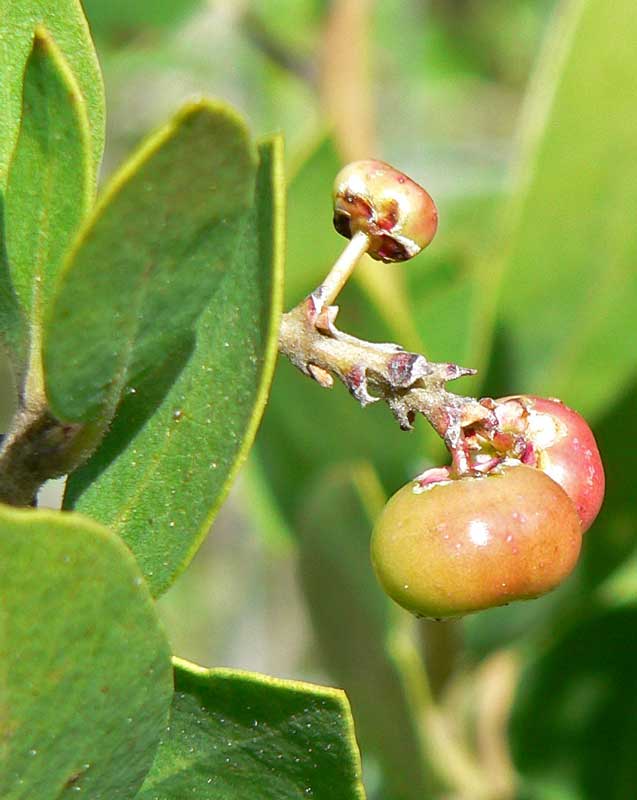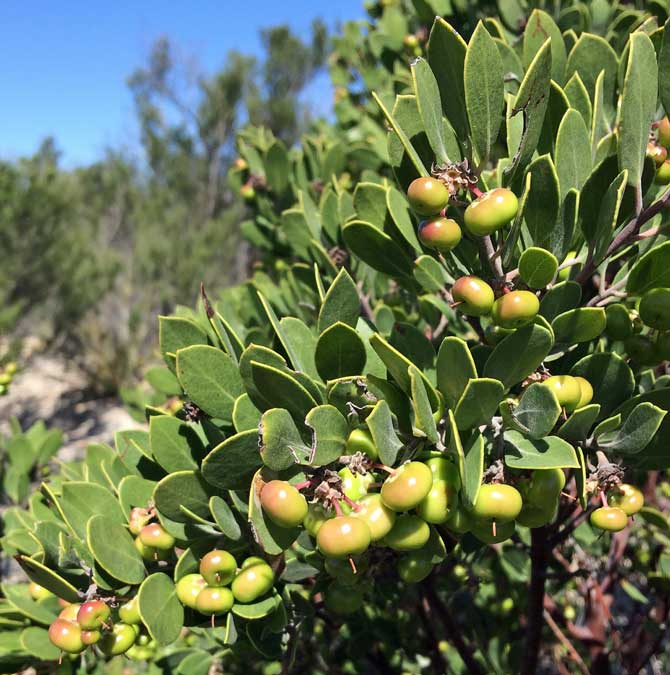Ethnobotany of southern California native plants:
Pointleaf manzanita (Arctostaphylos pungens)

photo credit: Stan Shebs, Creative Commons 3.0, GNU
Ripe manzanita berry

Early-season manzanita berries, these taste like tart, green apples.
Pointleaf manzanita (Arctostaphylos pungens)
Manzanita is a common shrub found throughout California. There are approximately 43 different species found in California alone. The name manzanita is derived the Spanish phrase, ‘little apple’. This makes sense, as the berries have the appearance of tiny apples.
This shrub features waxy leaves and red, shiny bark that grows around contorted trunks and a network of branches. Most species grow on the dry slopes of the chaparral and coastal range mountains. Manzanita shrubs are most commonly found below 5,000 feet in elevation.
Manzanita berries
The plant was used widely by Native Americans in the southwest. In general, the berries were collected when ripe and eaten raw. Manzanita berries were also cooked into beverages or jellies for later use. The pulp of the berry is sweet and dry when ripe. This pulp could be steeped in hot water and brewed into something resembling a cider.
One particular species used by the early people of southern California is the pointleaf manzanita. This species grows in woodland and chaparral biomes.
The Cahuilla people of the Palm Springs area picked fresh pointleaf manzanita berries and ate them raw. They would also process the berries into a jelly-like sauce and eat as a sort of gelatinous relish.
The Cahuilla also used the strong trunk wood of the pointleaf manzanita to make tools. Awl handles were often built from manzanita wood.
The stems of the pointleaf manzanita were used to make smoking pipes.
The Cahuilla dried out manzanita leaves and smoked them in pipes to bring good luck.
References:
Gifford, E. W. 1932 The Southeastern Yavapai. University of California Publications in American Archaeology and Ethnology 29:177-252 (p. 213)
Vestal, Paul A. 1952 The Ethnobotany of the Ramah Navaho. Papers of the Peabody Museum of American Archaeology and Ethnology 40(4):1-94 (p. 38)
Please return to our main Ethnobotany of southern California page.
On our main ethnobotany page, we present a clickable list of the southern California native plants that became a part of the culture of Native Americans and early European settlers. These plants were used for medicine, food, shelter, drink, tools and art.
Warning: The information about plants on this website is intended for general educational purposes only. The author of this website accepts no responsibility for problems arising from the user’s misidentification, misuse, or use of plants. Please read the full TERMS associated with this website.
